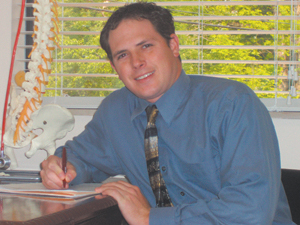A HEALTHY DAY: FIBROMYALGIA AND CHRONIC PAIN
 The condition of fibromyalgia creates many challenges for a person with this disorder. These challenges often go far beyond the characteristic chronic pain which alone can be potentially debilitating. Those with fibromyalgia have pain in many locations and the presence of multiple pain sites is often confusing to their doctor or doctors. Family physicians, internists, endocrinologists, and even pain management specialists and rheumatologists often have great difficulty in comprehending the full extent of fibromyalgia and the serious health and well-being issues that are caused by the disorder.
The condition of fibromyalgia creates many challenges for a person with this disorder. These challenges often go far beyond the characteristic chronic pain which alone can be potentially debilitating. Those with fibromyalgia have pain in many locations and the presence of multiple pain sites is often confusing to their doctor or doctors. Family physicians, internists, endocrinologists, and even pain management specialists and rheumatologists often have great difficulty in comprehending the full extent of fibromyalgia and the serious health and well-being issues that are caused by the disorder.
Persons with fibromyalgia have so many symptoms that an uninformed physician may find it easier to refer such patients to a psychologist or psychiatrist. But the physical symptoms of fibromyalgia are real. The sufferers have widespread pain on a chronic basis. Additional symptoms include fatigue, sleep disturbances, numbness or tingling in the hands and feet, joint stiffness, and cognitive dysfunction (brain fog). Depression commonly affects those with fibromyalgia.
Owing to the presence of so many chronic symptoms, fibromyalgia is notoriously difficult to treat. Such patients are typically taking multiple medications, prescribed by multiple specialists attempting to combat the problems that fall within their particular branch of medicine – pain management, rheumatology, and psychology/psychiatry.
Despite taking several medications on a long-term basis, most fibromyalgia patients tend not to improve. Depression and chronic pain take a profound toll, and daily living becomes quite burdensome. Many fibromyalgia patients despair of ever finding even a partial solution.
Attempts to address the problems of fibromyalgia by just treating the symptoms often fail. As the physiologic causes of the disorder are unknown, holistic approaches have a much greater likelihood of success. Multidisciplinary treatment is needed to impact this systems-wide disorder, including chiropractic care, nutritional recommendations, psychological counseling, and a gradual return to increased levels of physical activity and exercise.(1, 2, 3)
1Schneiderr M, et al: Chiropractic management of fibromyalgia syndrome: a systematic review of the literature. J Manipulative Physiol Ther 32(1):25-40, 2009
2Hauser W, et al: Guidelines on the management of fibromyalgia syndrome. A systematic review. Eur J Pain 14(1):5-10, 2010
3Busch AJ, et al: Exercise for fibromyalgia: a systematic review. J Rheumatol 35(6):1130-1144, 2008
This article is sponsored by Dr. Nill of Nill Family Chiropractic & Wellness Center, LLC. Please call us at (260) 459-2205 for your FREE consultation today!
Also, check out our website at www.nillchiropractic.com where you can take advantage of our automatic monthly newsletters and sign up for our “Members Only” section. By doing so, you can take advantage of chiropractic and product discounts along with access to exercises and much more! If you have any questions please feel free to contact Dr. Nill at drnill@nillchiropractic.com or call anytime.
Take care and Have A Healthy Day!
- THE IMPORTANCE OF BRINGING BALANCE TO YOUR SYSTEMS - December 8, 2017
- TURN, TURN, TURN – A Healthy Day - November 10, 2017
- TO LIFT OR NOT TO LIFT? – A Healthy Day - October 13, 2017


